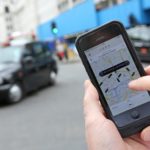 Ride-hailing services, such as Uber and Lyft, have undoubtedly taken cities by storm. Whilst there has been a huge amount of attention given to how such platforms have affected the world of work, somewhat less attention has been given to their impact on mundane matters of urban planning, such as parking facilities.
Ride-hailing services, such as Uber and Lyft, have undoubtedly taken cities by storm. Whilst there has been a huge amount of attention given to how such platforms have affected the world of work, somewhat less attention has been given to their impact on mundane matters of urban planning, such as parking facilities.
A recent study from the University of Colorado Denver aims to fill that void by exploring how ride-hailing is affecting parking utilization in cities. The study found that consumers of ride-hailing services are willing to pay more so they not only avoid driving, but also the stress, cost and hassle of parking. This has led to cities seeing a significant reduction in demand for parking, especially around popular venues, such as restaurants and bars. It’s a shift that the authors believe will prompt planners to reconsider the infrastructure devoted to parking.
Their latest work builds upon a previous study where they found that ridesharing services tend to result in more vehicles driving around without passengers, which subsequently results in higher congestion and fuel wastage. Whilst this is overwhelmingly negative, it does free up parking spaces in urban areas.
First-hand data
Due to a lack of data for research made available by the ride-hailing firms, the researchers took the unique step of actually becoming a driver for both Uber and Lyft for a few months. In addition to logging hundreds of rides, he also gathered surveys from over 300 passengers.
When they analyzed the data, which included not only the logistical data from each journey, but information about the reason for the journey, the car ownership of the passengers and their concerns around parking, it emerged that over 26% of passengers would have driven were they not concerned about parking issues. Indeed, parking-related stress was the 2nd most cited reason for ordering the ride.
“We found that the stress of the uncertainty of finding a parking spot downtown was enough to discourage people from driving themselves and made them willing to pay more to avoid it,” the researchers say.
Urban changes
The team believe that their work could help cities better understand the changing mobility needs of citizens, and therefore update their parking strategies accordingly. They suggest that planners may even wish to allocate more space for modes of transport such as cycling and walking to make cities greener and more sustainable. They might also borrow from airports, who often charge a pick-up and drop-off fee for ridesharing services to try and recoup the revenue lost from parking.
“Historically, cities have relied upon parking minimums,” they explain. “But too much parking is just as bad as – if not worse than – too little parking. Parking lots don’t make for great places. If you are a city, you’d see more bang for the buck from another land use, and having options like ride-hailing available should make doing so easier.”
More and more cities are striving to become sustainable, livable places, and the authors urge cities not to try and adapt to the new technologies, but rather for the new technologies to adapt to the changing demands of cities. With autonomous vehicles the next technology on the rack, urban mobility is certainly a fascinating area to observe.